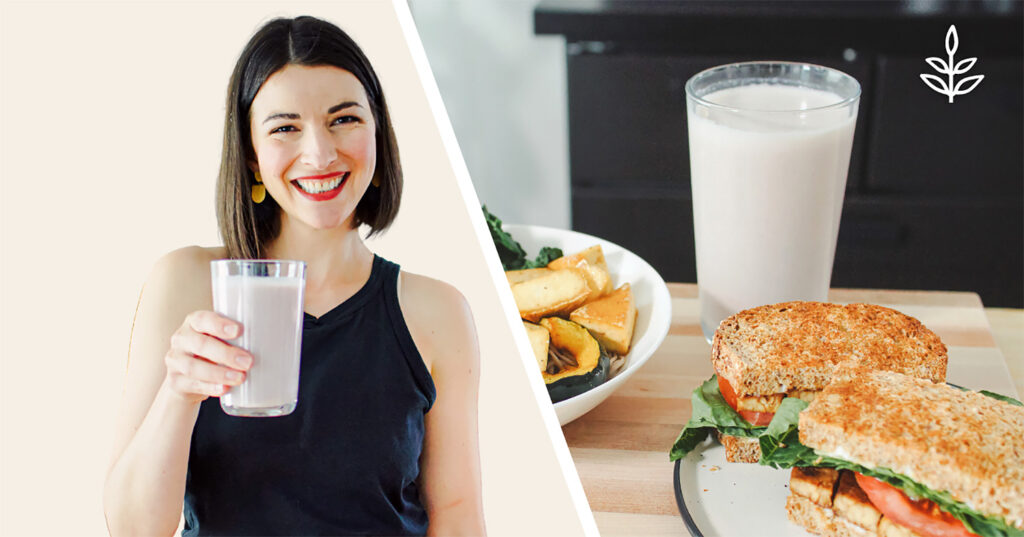Wondering whether or not soy is actually bad for you?
On this episode of LIVEKINDLY With Me, Desiree Nielsen discusses all things soy with her good friend Dr. Matthew Nagra. Plus, she gives three recipes that contain it: a strawberry pineapple smoothie, a tempeh BLT, and a roasted squash and tofu soba dish.
Is Soy Bad for You: 5 Myths Debunked
It affects hormones
Dr. Nagra explains that there’s a common idea that it is estrogenic. “[It] contains what are called phytoestrogens,” he says. Phytoestrogens are plant-based compounds that mimic estrogen in the body, but they have different effects. “They’re a lot weaker,” he adds.
“The bottom line is that all of the misinformation on the internet about phytoestrogens being equivalent to estrogen is untrue,” Nielsen explains.
It is bad for babies
In older research, there was some concern about the correlation between soy formula and goiter, an abnormal enlargement of the thyroid gland. “But modern research has disproven this theory,” Nielsen says.
“Soy milk-based formulas and soy protein-based formulas are in fact safe,” she adds. “The recommended plant-based milk alternative is soy milk. And the reason for that is that it has more protein and more fat than other plant-based milks.”
It’s subpar
“I don’t know where this idea comes from,” says Dr. Nagra. “When we look at the amino acid content of soy proteins whether that’s in tofu or tempeh or soy milk, it is very comparable in a lot of ways to a lot of animal proteins.”
Too much is dangerous
Nielsen says this myth stems back to the misconception that it disrupts thyroid or hormone function. “At normal levels of intake, there is absolutely no cause for concern and there actually seems to be a lot of benefits,” says Dr. Nagra.
“So, in essence, the internet is really, really wrong,” adds Nielsen. “You can feel good about consuming [it] in all of its forms, multiple servings a day.”
It damages the environment
Dr. Nagra explains that this myth is built on a misunderstanding of where soy production goes.
“Eighty-seven percent of the soy that’s produced actually gets processed in either soy oil or cake,” he says. “That cake is almost entirely used for animal feed. And only six percent of all of the soy that’s produced actually goes directly to human consumption.”
Nielsen adds that it would take far less soy to feed humans directly as opposed to the amounts of it that go into livestock for meat and dairy.
3 Recipes for Breakfast, Lunch, and Dinner





